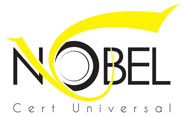ISO 13363:2016 specifies requirements for three types and two classes of hose. The hoses are intended for use in marine-engine wet-exhaust systems (where the exhaust gases are mixed with the discharge of cooling water). It does not apply to outboard motor/personal water craft. The three types are the following: – type 1: a softwall hose, […]

NOBEL Standards
ISO 3691-3:2016 gives safety requirements and the means for their verification, additional to those of ISO 3691‑1, for industrial trucks with a vertical, non-tilting mast: a) those trucks having an elevating operator position, and order‑picking trucks, as defined in ISO 5053‑1, where the elevating operator position and the load‑handling device lifts to a height of […]
SO/IEC 24751-2:2008 provides a common information model for describing the learner or user needs and preferences when accessing digitally delivered resources or services. This description is one side of a pair of descriptions used in matching user needs and preferences with education delivery (as described in ISO/IEC 24751-1). ISO/IEC 24751-2:2008 discusses the basic principles adhered […]
ISO/TS 29001:2010 defines quality management system (QMS) requirements for product and service supply organizations for the petroleum, petrochemical and natural gas industries. The third edition has been updated to include the text of ISO 9001:2008, the generic QMS standard, unaltered and in its entirety. Petroleum, petrochemical, and natural gas industry sector-specific supplemental requirements are given outside […]
There is a wide variety of products available to consumers in the global marketplace. Products routinely travel across borders in order to meet increasing consumer demand as suppliers seek to lower cost and expand markets. While many products are safe and fit for intended use, statistics show that, each year, millions of people suffer injuries […]
ISO 22315:2014 provides guidelines for mass evacuation (An evacuation in response to a risk or threat is the movement of people from a designated area.) planning in terms of establishing, implementing, monitoring, evaluating, reviewing, and improving preparedness. It establishes a framework for each activity (the need for evacuation can arise from naturally occurring events, human […]
Expect the unexpected and plan for it with an ISO 22301 Business Continuity Management System (BCMS). Discover how you can adapt the standard to your organization to manage the risks that threaten the smooth running of your business and ensure its survival in the event of a disruption. ISO 22301 is the international standard for business […]
An International Workshop Agreement (IWA) is an ISO document produced through workshop meetings and not through the technical committee process. An IWA provides guidance and is not intended for use in contracts for conformity assessment or for certification. IWA 2 was first published in 2003. The second edition, IWA 2:2007, Quality Management Systems – Guidelines for […]
Two types of auditing are required to become registered to the standard: auditing by an external certification body (external audit) and audits by internal staff trained for this process (internal audits). The aim is a continual process of review and assessment to verify that the system is working as it is supposed to; to find out where it can […]
The ISO 9000:2015 and ISO 9001:2015 standards are based on seven quality management principles that senior management can apply for organizational improvement: Customer focus Understand the needs of existing and future customers Align organizational objectives with customer needs and expectations Meet customer requirements Measure customer satisfaction Manage customer relationships Aim to exceed customer expectations […]







